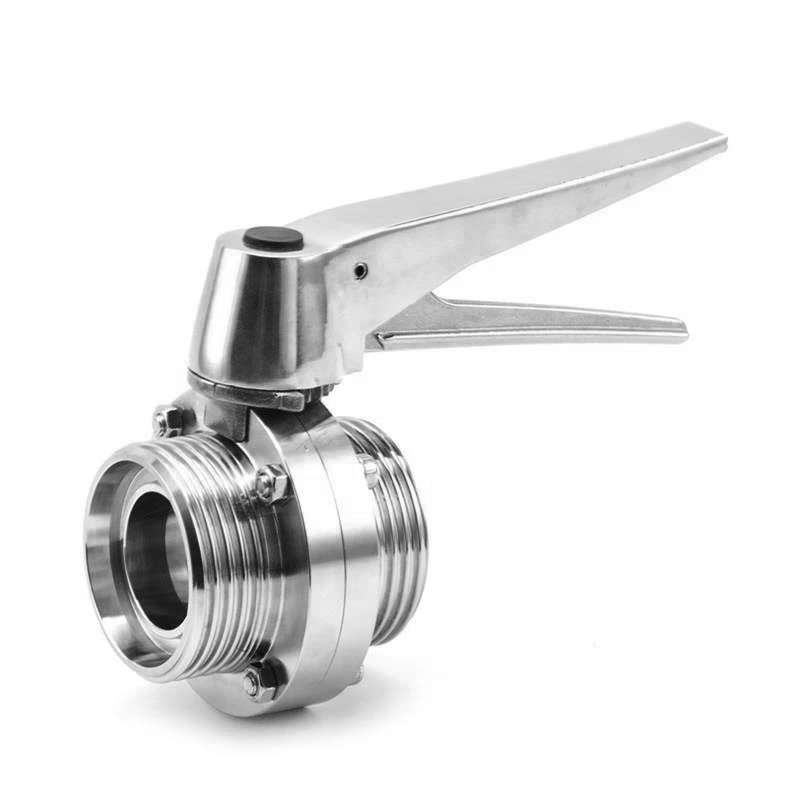General Requirements For Sanitary Butterfly Valve
1. Sanitary Butterfly Valve must have a normal service life of at least 20 years.
2. OEM production is strictly prohibited. The valve body must have a convex or concave product logo cast on it. The valve body must have the valve caliber, operating pressure, body material, and manufacturer's logo cast in appropriate locations. The valve nameplate should indicate the valve model, serial number, production date, valve caliber, and operating pressure.
3. Unless otherwise specified, all valves are designed to operate at 1.0 MPa.
4. Butterfly valves must be manufactured in accordance with the "Flange and Wafer-Connected Resilient Sealing Butterfly Valves" (GB/T12238-2008). The structural length of butterfly valves must comply with the "Structural Length of Metal Valves" standard (GB/T12221-2005). The flange connection dimensions and sealing surface form of flange-connected valves shall comply with the requirements of "Integral Cast Iron Flanges" (GB/T17241.6-2008). The flange technical requirements shall comply with the requirements of GB/T17241.7-1998 "Technical Conditions for Cast Iron Pipe Flanges."
5. Unless otherwise specified, valve opening indicators shall be provided to clearly display the valve opening position.
All valve gear operating mechanisms shall be capable of opening and closing the valve at a water head greater than 30%. Valve handwheels shall be cast iron and engraved with the open/close direction. All valves shall close clockwise. Operating levers shall not be used in place of handwheels. The maximum operating force of the handwheel shall not exceed 200N.
6. Manual valves in valve wells shall be equipped with ground-mounted keys.
7. Valves (gates) must be installed concentrically with the pipe and must be secure, reliable, well-sealed, and leak-proof. 8. Both ends of the valve should be equipped with blind plates to protect the flange sealing surfaces, welding or threaded ends, and the valve cavity. Blind plates should be made of wood, wood fiberboard, plastic, or metal and secured with bolts, steel clamps, or locking devices. They should be easily removable.
9. Valves should be packaged for shipment, either in bulk or in airtight packaging, but must be protected from damage and loss of parts during normal transportation.
10. All valve parts, seals, and anti-corrosion coatings must not be made of materials that could pollute the treated water. The sanitary conditions of valve materials must comply with the requirements of GB17219-1998, "Safety Evaluation Standard for Drinking Water Transmission and Distribution Equipment and Protective Materials." Protective coatings and rubber must have a provincial-level drinking water safety product hygiene license.
11. Within 18 months of the valve's shipment date, and under the specified operating conditions specified in the product manual, any damage caused by material defects, manufacturing quality issues, design, or other factors will be covered by the manufacturer's warranty or replacement of the covered parts or the entire unit free of charge.
